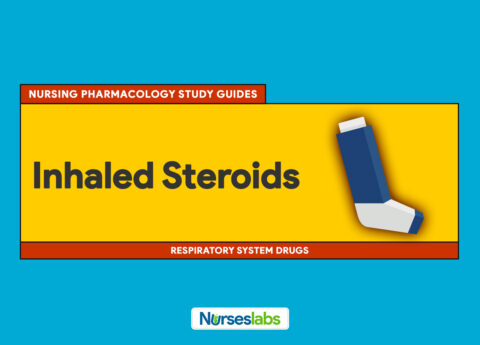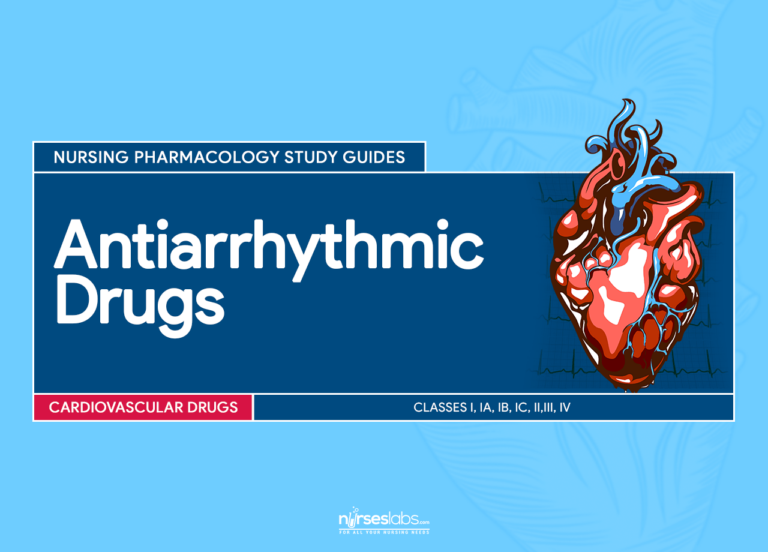As a nurse, it is essential to have a comprehensive understanding of various medications to provide optimal care to patients. This article aims to provide nurses with an introduction to furosemide, including its pharmacological properties, uses, nursing considerations and interventions, potential side effects, and more.
What is Furosemide?
Furosemide, commonly known by its brand name Lasix, is a diuretic medication widely used in the treatment of various conditions such as edema (fluid retention) and hypertension (high blood pressure). It belongs to a class of drugs called loop diuretics and works by increasing the amount of urine produced by the kidneys, thereby helping to eliminate excess fluid and reduce swelling. It is available in oral tablet form, as well as in injectable formulations for intravenous use in hospitalized patients. Furosemide works by inhibiting the reabsorption of sodium, chloride, and water in the kidneys, leading to increased urine production. This diuretic effect helps to reduce fluid overload in the body, relieving symptoms such as swelling, shortness of breath, and high blood pressure.
Generic Name
Furosemide is the generic name for this diuretic medication. It is the active ingredient that provides therapeutic effects and is present in both the brand-name and generic versions of the drug.
Brand Names
Lasix is one of the commonly recognized brand names for furosemide. It is a well-established and widely used brand that has been on the market for many years. While there are other brand names for furosemide, Lasix has gained popularity and recognition among healthcare professionals and patients alike.
Drug Classification of Furosemide
The drug classification of furosemide is:
Therapeutic Class
Furosemide belongs to the therapeutic class of diuretic medications. Diuretics are drugs that promote diuresis, which is the increased production of urine. They are commonly prescribed to treat conditions characterized by fluid retention, such as edema (swelling) and hypertension (high blood pressure). By increasing urine output, diuretics help to remove excess fluid from the body, reducing swelling and lowering blood pressure.
Pharmacologic Class
Within the class of diuretics, furosemide specifically falls under the subclass of loop diuretics. This class of diuretics derives its name from the site of action within the kidneys where they exert their effects, specifically the loop of Henle. Loop diuretics like furosemide work by inhibiting the reabsorption of sodium, chloride, and water in this part of the renal tubules, leading to increased urine production and subsequent elimination of excess fluid from the body.
Indications and Therapeutic Effects
Furosemide finds application in various medical conditions, including:
1. Edema associated with heart failure. Heart failure is a chronic condition characterized by the heart’s inability to pump blood efficiently. This can result in fluid accumulation in different parts of the body, leading to edema. Furosemide is often prescribed to reduce fluid overload and relieve symptoms such as swelling and shortness of breath.
2. Hypertension. Furosemide is sometimes used as adjunctive therapy in the treatment of hypertension. By promoting diuresis, it helps to reduce blood volume and subsequently lower blood pressure. However, it is important to note that furosemide alone is not considered a first-line treatment for hypertension and is typically used in combination with other antihypertensive agents.
3. Renal impairment. In patients with kidney disorders, such as acute renal failure or chronic kidney disease, furosemide may be prescribed to enhance diuresis and prevent fluid overload. By increasing urine output, it can help to remove waste products and toxins from the body, improving kidney function.
4. Liver cirrhosis. Liver cirrhosis is a condition characterized by irreversible scarring of the liver tissue, which can lead to fluid accumulation in the abdomen (ascites). Furosemide is often used as part of the management strategy for ascites to promote diuresis and reduce abdominal swelling.
5. Pulmonary edema. Pulmonary edema refers to the accumulation of fluid in the lungs, often caused by conditions such as congestive heart failure or acute respiratory distress syndrome. Furosemide may be administered to help eliminate excess fluid from the lungs and improve breathing.
Mechanism of Action
Furosemide exerts its therapeutic effects by targeting a specific transport protein called the Na-K-2Cl cotransporter, which is responsible for the reabsorption of sodium, chloride, and potassium ions in the thick ascending limb of the loop of Henle in the kidneys. By inhibiting this transporter, furosemide prevents the reabsorption of these ions, leading to increased excretion in the urine.
This mechanism of action not only promotes diuresis but also affects the balance of electrolytes in the body. Furosemide can cause increased excretion of potassium, magnesium, and calcium ions, which may necessitate supplementation to maintain normal levels and prevent electrolyte imbalances.
Precautions and Contraindications
When considering the use of furosemide, it is important to be aware of the precautions and contraindications associated with this diuretic medication. These guidelines help ensure the safe and appropriate use of furosemide in individuals with various medical conditions. Here are the precautions and contraindications to consider:
Furosemide Precautions
While furosemide is an effective diuretic medication, it is important to be aware of certain precautions when using this drug. Precautions are guidelines and considerations that need to be taken into account to ensure the safe and appropriate use of the medication. Here are some important precautions to keep in mind:
1. Allergies. Individuals with known allergies to furosemide or other sulfonamide medications should exercise caution. Allergic reactions may include skin rashes, itching, swelling, or difficulty breathing. It is important to inform healthcare providers of any allergies before initiating treatment.
2. Kidney Function. Furosemide primarily affects kidney function. Individuals with impaired kidney function or a history of kidney disease should use furosemide with caution. Dosage adjustments may be necessary to ensure safe and effective use.
3. Electrolyte Imbalances. Furosemide can cause changes in electrolyte levels, including potassium, sodium, and magnesium. Regular monitoring of electrolyte levels is important, especially for individuals with pre-existing electrolyte imbalances or conditions such as heart failure or liver disease.
4. Diabetes. Furosemide can affect blood sugar levels and may require adjustments in the management of diabetes. Close monitoring of blood glucose levels is important for individuals with diabetes who are taking furosemide.
5. Pregnancy and Breastfeeding. Pregnant or breastfeeding individuals should consult their healthcare providers before using furosemide. The potential risks and benefits of the medication need to be carefully evaluated in these situations.
6. Other Medical Conditions. Individuals with certain medical conditions, such as liver disease, gout, lupus, or electrolyte abnormalities, should inform their healthcare providers before starting furosemide treatment. Close monitoring and possible dose adjustments may be necessary.
Furosemide Contraindications
Contraindications are specific situations or conditions in which the use of medication is not recommended or should be avoided entirely. For furosemide, the following are important contraindications to be aware of:
1. Allergy to Sulfonamide Medications. Furosemide belongs to the sulfonamide class of drugs. Individuals with a known allergy to sulfonamide medications should avoid using furosemide, as it may lead to an allergic reaction.
2. Anuria. Anuria, the inability to produce urine, is a contraindication for furosemide use. Since furosemide relies on urine production to exert its diuretic effects, it will not be effective in individuals with anuria.
3. Severe Electrolyte Imbalances. Furosemide is contraindicated in individuals with severe electrolyte imbalances, such as severely low potassium or sodium levels. The use of furosemide may worsen these imbalances.
4. Hypovolemia. Individuals with severe hypovolemia, a significant decrease in blood volume, should not use furosemide. Furosemide promotes diuresis, which further reduces blood volume and can exacerbate the condition.
5. Hepatic Coma. Furosemide is contraindicated in individuals with hepatic coma, a severe liver condition characterized by loss of consciousness and liver failure.
Drug Interactions
When using furosemide, it is important to be aware of potential drug interactions that can occur. Drug interactions can affect the way medications work in the body, leading to reduced effectiveness or increased risk of side effects. Here are some common drug interactions associated with furosemide:
Drug-Drug
1. Nonsteroidal Anti-Inflammatory Drugs (NSAIDs). NSAIDs, such as ibuprofen and naproxen, can reduce the diuretic and antihypertensive effects of furosemide. Concurrent use should be monitored, and dosage adjustments may be necessary.
2. Lithium. Furosemide can increase the elimination of lithium from the body, potentially reducing its effectiveness in managing mood disorders. Close monitoring of lithium levels and adjustments in dosage may be required.
3. Other Diuretics. Concurrent use of furosemide with other diuretics can potentiate the diuretic effect and increase the risk of dehydration and electrolyte imbalances. Caution is advised, and close monitoring of electrolyte levels is necessary.
4. Corticosteroids. Furosemide can enhance the potassium-depleting effects of corticosteroids, leading to an increased risk of hypokalemia. Regular monitoring of potassium levels and adjustment of therapy may be necessary.
5. Digoxin. Furosemide can alter the levels of digoxin in the body, potentially increasing the risk of digoxin toxicity. Close monitoring of digoxin levels and appropriate dosage adjustments are important.
Drug-Natural Products
1. Licorice. Natural products containing licorice can reduce potassium levels in the body. When used concurrently with furosemide, the risk of hypokalemia may be increased. Monitoring of potassium levels and adjustments in therapy may be necessary.
2. St. John’s Wort. St. John’s Wort can induce liver enzymes that metabolize furosemide, potentially reducing its effectiveness. Caution is advised when using St. John’s Wort alongside furosemide, and close monitoring of therapeutic response is necessary.
Drug-Food
1. Grapefruit Juice. Grapefruit juice can interfere with the metabolism of furosemide, leading to increased blood levels of the medication. This can potentiate its effects and increase the risk of side effects. Avoid consuming grapefruit or grapefruit juice while taking furosemide.
2. High-Salt Foods. Furosemide is a diuretic that helps to eliminate excess salt and fluid from the body. Consuming high-salt foods can counteract the effects of furosemide and reduce its effectiveness. It is advisable to follow a balanced, low-salt diet while taking furosemide.
Adverse Effects
Furosemide is a diuretic medication that is generally well-tolerated and effective for managing fluid retention. However, like any medication, it can potentially cause side effects and adverse reactions. It is important to be aware of these potential effects to ensure the safe use of furosemide. Here are some common side effects and adverse reactions associated with furosemide:
Common Side Effects
1. Increased Urination. Furosemide is a diuretic that promotes urine production. As a result, increased urination is a common side effect. This effect is expected and usually not cause for concern. However, if it becomes excessive or is accompanied by other concerning symptoms, it is important to consult a healthcare professional.
2. Electrolyte Imbalances. Furosemide can cause imbalances in electrolyte levels, such as low potassium (hypokalemia), low sodium (hyponatremia), and low magnesium (hypomagnesemia). These imbalances can lead to symptoms such as muscle cramps, weakness, irregular heartbeat, and fatigue. Regular monitoring of electrolyte levels and appropriate supplementation may be necessary.
3. Dizziness and Lightheadedness. Furosemide can cause dizziness or lightheadedness, especially when standing up quickly. It is important to rise slowly from a seated or lying position to minimize the risk of falls or injury.
4. Low Blood Pressure. Furosemide can lower blood pressure, leading to symptoms such as dizziness, fainting, or feeling lightheaded. Monitoring of blood pressure is important, especially in individuals with pre-existing low blood pressure.
5. Headache. Some individuals may experience headaches as a side effect of furosemide. These headaches are generally mild and resolve on their own. If persistent or severe, it is advisable to consult a healthcare professional.
Adverse Reactions
1. Allergic Reactions. Although rare, allergic reactions to furosemide can occur. Symptoms may include skin rash, itching, swelling, severe dizziness, or difficulty breathing. If any signs of an allergic reaction are experienced, immediate medical attention should be sought.
2. Ototoxicity. Furosemide, particularly when administered in high doses or rapidly infused intravenously, can cause damage to the inner ear and lead to hearing loss or ringing in the ears (tinnitus). Prompt reporting of any changes in hearing is essential.
3. Hypersensitivity Reactions. Some individuals may experience hypersensitivity reactions to furosemide, which can present as fever, skin rash, joint pain, or general malaise. These reactions require medical evaluation and may necessitate discontinuation of the medication.
4. Pancreatitis. Although rare, furosemide has been associated with pancreatitis, an inflammation of the pancreas. Symptoms may include severe abdominal pain, nausea, and vomiting. Immediate medical attention is necessary if pancreatitis is suspected.
5. Erythema Multiforme (EM). Erythema multiforme is a rare skin disorder characterized by the development of target-shaped or “bull’s eye” skin lesions. It is often triggered by an immune response to infections or medications, including furosemide. Symptoms of EM may include red, patchy skin rash, target-shaped lesions with a red center and a surrounding ring, itching or burning sensation, and blisters or ulcerations in severe cases.
6. Stevens-Johnson Syndrome (SJS) and Toxic Epidermal Necrolysis (TEN). Stevens-Johnson syndrome (SJS) and toxic epidermal necrolysis (TEN) are severe and potentially life-threatening skin conditions that can be caused by certain medications, including furosemide. They are considered rare but serious adverse reactions. Symptoms of SJS and TEN may include painful skin rash that spreads quickly, skin blistering or peeling, mucous membrane involvement (e.g., mouth, eyes, genitals), fever and flu-like symptoms, and severe skin pain and discomfort.
7. Aplastic Anemia. Aplastic anemia is a rare but serious condition characterized by a decrease in the production of red blood cells, white blood cells, and platelets in the bone marrow. Although extremely rare, furosemide has been reported to be associated with the development of aplastic anemia.
8. Agranulocytosis. Agranulocytosis is a severe condition characterized by a significant reduction in the number of white blood cells, specifically granulocytes. Although infrequent, furosemide has been reported to cause agranulocytosis.
Administration Considerations
Available Forms
Furosemide is available in the following forms:
- Tablets: 20 mg, 40 mg, 80 mg, 500 mg.
- Oral solution (10 mg/mL — orange flavor, 8 mg/mL — pineapple — peach flavor): 8 mg/mL, 10 mg/mL.
- Solution for injection: 10 mg/mL.
Dosage for Neonates
Edema
Dosage for Children
See also: Pediatric Dosage Calculations
Edema
- PO (Children >1 mo): 2 mg/kg as a single dose; may be increased by 1–2 mg/kg q 6–8 hr (maximum dose = 6 mg/kg).
- IM, IV (Children): 1 – 2 mg/kg/dose q 6 – 12 hr continuous infusion — 0.05 mg/kg/hr, titrate to clinical effect.
Dosage for Adults
Edema
- PO (Adults): 20 – 80 mg/day as a single dose initially, may repeat in 6–8 hr; may increase dose by 20–40 mg q 6–8 hr until desired response. Maintenance doses may be given once or twice daily (doses up to 2.5 g/day have been used in patients with HF or renal disease). Hypertension — 40 twice daily initially (when added to regimen, decrease dose of other antihypertensives by 50%); adjust further dosing based on response; Hypercalcemia — 120 mg/day in 1 – 3 doses.
- IM, IV (Adults): 20–40 mg, may repeat in 1–2 hr and inceased by 20 mg every 1 – 2 hr until response is obtained, maintenance dose may be given q 6 – 12 hr; Continuous infusion — Bolus 0.1 mg/kg followed by 0.1 mg/kg/hr, double q 2 hr to a maximum of 0.4 mg/ kg/hr.
- PO (Adults): 40 twice daily initially (when added to regimen, decrease dose of other antihypertensives by 50%); adjust further dosing based on response.
Pharmacokinetics
Understanding the pharmacokinetics of furosemide provides insights into how the medication is absorbed, distributed, metabolized, and eliminated by the body. Here is an overview of the pharmacokinetic properties of furosemide:
1. Absorption. Furosemide is well-absorbed when taken orally, with approximately 60-70% of the dose reaching systemic circulation. The onset of action occurs within one hour after oral administration, with peak effects typically observed within 1-2 hours.
2. Distribution. Furosemide has a relatively large volume of distribution, indicating that it is distributed widely throughout the body. The medication crosses the placenta and is found in breast milk, so caution should be exercised during pregnancy and breastfeeding.
3. Protein Binding. Furosemide has a moderate degree of protein binding, primarily to albumin, a protein found in the blood. Approximately 91-99% of furosemide is bound to plasma proteins. This binding affects the distribution and elimination of the medication.
4. Metabolism. Furosemide undergoes minimal metabolism in the liver. The majority of the drug is excreted unchanged in the urine. However, a small portion (less than 10%) is metabolized by hepatic enzymes to produce inactive metabolites.
5. Elimination. Furosemide is primarily eliminated by the kidneys through both glomerular filtration and tubular secretion.
6. Half-life. The medication has a relatively short half-life, ranging from 30-60 minutes in individuals with normal renal function. In individuals with impaired kidney function, the half-life may be prolonged.
7. Dosage Adjustments. For individuals with impaired renal function, dosage adjustments may be necessary to ensure safe and effective use of furosemide. It is important to consider the individual’s creatinine clearance or estimated glomerular filtration rate (eGFR) when determining the appropriate dosage.
8. Drug Interactions. Furosemide can interact with other medications that affect renal function or electrolyte balance. It is important to review the individual’s medication profile and consider potential drug interactions before initiating furosemide therapy.
Nursing Considerations for Furosemide
As a diuretic medication, furosemide requires careful nursing assessment to ensure safe and effective use.
Nursing Assessment
Nurses play a vital role in monitoring patients receiving furosemide therapy. Here are key nursing assessments and their rationales when administering furosemide:
1. Obtain a comprehensive medical history, including any known allergies, kidney function, liver disease, heart conditions, electrolyte imbalances, and concurrent medications.
This assessment helps identify potential contraindications, drug interactions, and risk factors for adverse effects.
2. Regularly monitor blood pressure, heart rate, and respiratory rate. Furosemide’s primary action is to reduce fluid volume, leading to potential changes in blood pressure and heart rate.
Monitoring vital signs provides information about the medication’s effectiveness and guides appropriate dosing adjustments.
3. Assess the patient’s fluid balance, including input and output measurements, daily weights, and signs of fluid overload or dehydration.
Furosemide promotes diuresis and can lead to fluid and electrolyte imbalances. Monitoring fluid balance helps determine the need for dosage adjustments and guides interventions to maintain adequate hydration.
4. Regularly monitor electrolyte levels, particularly potassium, sodium, and magnesium.
Furosemide can cause imbalances in these electrolytes, leading to potential complications such as cardiac arrhythmias or muscle weakness. Monitoring electrolyte levels helps identify imbalances and guides appropriate interventions, such as electrolyte supplementation.
5. Assess renal function through laboratory tests, such as serum creatinine and estimated glomerular filtration rate (eGFR).
Furosemide is primarily eliminated by the kidneys, and impaired renal function can affect drug clearance and increase the risk of adverse effects. Monitoring renal function helps determine appropriate dosing and detects any worsening of kidney function.
6. Monitor for signs of adverse reactions, such as allergic reactions (skin rash, itching, difficulty breathing), ototoxicity (changes in hearing or tinnitus), or severe skin reactions (blistering, peeling).
Prompt identification of adverse reactions allows for early intervention and prevention of potential complications.
7. Provide thorough patient education about furosemide, including dosage instructions, potential side effects, the importance of compliance, and dietary considerations (e.g., low-sodium diet).
Patient education promotes understanding, adherence to the treatment plan, and self-management of potential complications.
Furosemide Nursing Interventions
Nurses’ role in administering furosemide goes beyond assessment. It also involves implementing nursing interventions to ensure the safe and effective use of the medication. Here are key nursing interventions and their rationales when caring for patients receiving furosemide therapy:
1. Administer furosemide as prescribed, ensuring the correct dosage, route, and timing.
This intervention ensures that patients receive the intended therapeutic effects of furosemide and helps maintain fluid balance.
2. Document the patient’s fluid intake and output, daily weights, and assess for signs of fluid overload or dehydration.
Furosemide promotes diuresis, and monitoring fluid balance helps determine the effectiveness of the medication and guides adjustments in dosage and fluid management.
3. Continuously monitor blood pressure to assess the patient’s response to furosemide therapy.
Furosemide’s diuretic effect can lower blood pressure, and monitoring helps identify hypotension or changes that may require dosage adjustments or additional interventions.
4. Provide comprehensive patient education about furosemide, including the purpose of the medication, dosage instructions, potential side effects, and the importance of adherence.
Empowering patients with knowledge promotes their active participation in their own care.
5. Educate patients about the signs and symptoms of electrolyte imbalances and when to seek medical attention.
Empowering patients with knowledge promotes their active participation in their own care.
6. Educate patients on dietary modifications, such as following a low-sodium diet, if applicable.
Sodium plays a crucial role in regulating fluid balance in the body. When sodium intake is high, it can lead to fluid retention and exacerbate conditions that require diuretic therapy. By following a low-sodium diet, patients can help maintain a more balanced fluid status, which aligns with the goal of furosemide therapy.
7. Encourage regular exercise and weight management to support fluid balance and overall cardiovascular health.
Regular exercise can support fluid balance by promoting circulation and reducing fluid retention. Physical activity helps improve blood flow, which can aid in the elimination of excess fluid from the body. This synergistic effect of exercise with furosemide can enhance fluid balance and reduce symptoms of edema or fluid overload. Regular exercise is known to have numerous cardiovascular benefits, including strengthening the heart, improving blood pressure, and enhancing overall cardiovascular function.
8. Collaborate with the healthcare team to provide comprehensive care.
Furosemide therapy often involves managing complex medical conditions, such as heart failure, kidney disease, or hypertension. Collaborating with the healthcare team allows for a holistic approach to patient care, considering various aspects of the patient’s health, including medical history, comorbidities, and treatment goals. By working together, healthcare professionals can develop a comprehensive care plan that addresses the patient’s unique needs and optimizes treatment outcomes.
9. Note any side effects or adverse reactions of furosemide, such as allergic reactions, ototoxicity, or severe skin reactions.
Prompt identification and reporting of adverse effects enable timely interventions to minimize complications and improve patient outcomes.
10. Communicate and collaborate with other healthcare professionals involved in the patient’s care, such as physicians, pharmacists, and dietitians.
Sharing pertinent information and seeking guidance when needed ensure coordinated care and optimize patient outcome
Patient Education and Teaching
Patient education and teaching are essential components of care for patients receiving furosemide. Educating patients about their medication helps them understand the purpose, benefits, potential side effects, and necessary precautions. Here are key aspects of patient education and teaching, along with their rationales, for patients receiving furosemide:
1. Explain to the patient why furosemide has been prescribed to them. Describe its role as a diuretic medication that helps eliminate excess fluid from the body, reducing symptoms such as edema or shortness of breath.
This understanding helps patients recognize the purpose and benefits of taking furosemide as prescribed.
2. Provide clear instructions on how to take furosemide, including the recommended dosage, frequency, and timing.
Emphasize the importance of following the prescribed schedule to maintain consistent therapeutic levels of the medication in the body.
3. Educate patients about potential side effects of furosemide. Common side effects may include increased urination, electrolyte imbalances, dizziness, or headache.
By being aware of potential side effects, patients can monitor their symptoms and promptly report any concerns to their healthcare provider.
4. Explain the importance of maintaining fluid and electrolyte balance while taking furosemide.
Furosemide works by promoting diuresis, which helps eliminate excess fluid from the body. Maintaining fluid balance is essential to enhance the medication’s effectiveness in reducing symptoms like edema, shortness of breath, or fluid overload. By understanding the importance of fluid balance, patients can actively participate in managing their condition and optimizing treatment outcomes.
5. Emphasize the need to follow any dietary modifications, such as a low-sodium diet, as prescribed.
A low-sodium diet complements the medication’s action by reducing the overall sodium intake. Sodium contributes to fluid retention, and by following a low-sodium diet, patients can enhance the effectiveness of furosemide in reducing fluid buildup and managing their condition more effectively.
6. Discuss the importance of monitoring fluid intake and output, as well as signs of dehydration or electrolyte imbalances.
Furosemide’s diuretic effect can lead to increased urine production, potentially resulting in fluid loss. Explaining the importance of monitoring fluid intake and output helps patients recognize the need to consume an adequate amount of fluids to prevent dehydration. Adequate hydration ensures optimal bodily functions, supports overall well-being, and helps prevent complications associated with dehydration.
7. Stress the significance of taking furosemide as prescribed and not skipping doses.
Explain that consistent medication adherence helps ensure optimal therapeutic effects and prevents complications related to fluid overload or inadequate diuresis.
8. Inform patients about the need for regular monitoring, such as blood pressure checks, laboratory tests (e.g., electrolyte levels, renal function), and follow-up appointments.
This monitoring allows healthcare providers to assess the patient’s response to furosemide, make any necessary adjustments, and address any concerns that may arise.
9. Discuss the importance of informing healthcare providers about all medications, including over-the-counter medications, supplements, and herbal products, to identify potential interactions with furosemide.
This knowledge helps prevent adverse effects and ensures the safe and effective use of medications.
10. Educate patients about safety precautions while taking furosemide. This includes rising slowly from a seated or lying position to minimize dizziness, avoiding excessive sun exposure, and recognizing signs of adverse reactions, such as skin rash or difficulty breathing.
11. Encourage patients to seek immediate medical attention if they experience any concerning symptoms.
Furosemide, like any medication, can cause adverse effects in some individuals. These effects may include severe allergic reactions, changes in hearing, or skin reactions. By encouraging patients to promptly seek medical attention, healthcare providers can assess the symptoms and take appropriate actions to address them. Early recognition and intervention can prevent complications and promote patient safety.
Evaluation and Desired Outcomes
The desired outcomes in patients taking furosemide include:
1. Effective Diuresis. Furosemide is a diuretic medication used to promote diuresis and reduce fluid retention. The desired outcome is the effective elimination of excess fluid from the body, resulting in decreased edema, improved breathing, and relief from symptoms associated with fluid overload.
2. Fluid Balance. Achieving and maintaining a balanced fluid status is a desired outcome. This involves preventing fluid overload or dehydration by adjusting the furosemide dosage or managing fluid intake. The patient should have stable fluid levels within the target range, promoting overall comfort and well-being.
3. Blood Pressure Control. Furosemide may be prescribed to manage hypertension or reduce blood pressure in patients with conditions like congestive heart failure. The desired outcome is achieving and maintaining target blood pressure levels determined by the healthcare provider. Controlled blood pressure reduces the risk of complications associated with hypertension and supports cardiovascular health.
4. Improved Symptoms. Furosemide is often prescribed to alleviate symptoms associated with fluid overload, such as shortness of breath, swelling, or fatigue. The desired outcome is a reduction in these symptoms, leading to improved exercise tolerance, enhanced quality of life, and overall symptom relief.
5. Electrolyte Balance. Maintaining a stable electrolyte balance is a desired outcome. Furosemide can cause imbalances in electrolytes, particularly potassium, sodium, and magnesium. The goal is to keep electrolyte levels within the desired range, preventing complications such as cardiac arrhythmias or muscle weakness.
6. Medication Adherence. Desired outcomes include patients consistently adhering to the prescribed furosemide regimen. This involves taking the medication as prescribed, following the recommended dosage and frequency. Adherence ensures the medication’s optimal therapeutic effects and helps prevent complications related to fluid overload or inadequate diuresis.
7. Collaboration with the Healthcare Team. A desired outcome is effective collaboration and communication between the patient and the healthcare team. This allows for shared decision-making, open dialogue, and comprehensive patient-centered care. Collaboration ensures that the patient’s concerns are addressed, treatment goals are aligned, and optimal outcomes are achieved.
Recommended Resources
Our recommended nursing pharmacology resources and books:
Disclosure: Included below are affiliate links from Amazon at no additional cost from you. We may earn a small commission from your purchase which will help support us. Thank you! For more information, check out our privacy policy.
Pharm Phlash! Pharmacology Flash Cards #1 BEST SELLER!
Test-yourself review cards put critical clinical information for nearly 400 of the top generic medications at your fingertips. And, you can count on them for accuracy, because each card is based on content from Davis’s Drug Guide for Nurses. Increase your test scores in pharmacology class.

Focus on Pharmacology (8th Edition)
Focus on Nursing Pharmacology makes challenging concepts more approachable. Engaging learning features cultivate your clinical application, critical thinking and patient education capabilities. This updated 8th edition builds on your knowledge of physiology, chemistry and nursing fundamentals to help you conceptualize need-to-know information about each group of drugs.

Pharmacology Made Incredibly Easy (Incredibly Easy! Series®)
Nursing pharmacology guide offers step-by-step guidance so you can grasp the fundamentals in enjoyable Incredibly Easy style. This is the perfect supplement to class materials, offering solid preparation for NCLEX® as well as a handy refresher for experienced nurses. Colorfully illustrated chapters offer clear, concise descriptions of crucial nursing pharmacology concepts and procedures.

Lehne’s Pharmacology for Nursing Care (11th Edition)
The Eleventh Edition of Lehne’s Pharmacology for Nursing Care provides a thorough understanding of key drugs and their implications for nursing care. This text, written by renowned nursing educators, helps you comprehend and apply pharmacology principles. A clear and engaging writing style simplifies complex concepts, making even the most challenging pharmacology content enjoyable. We recommend this book if you want a comprehensive nursing pharmacology guide.

Nursing Drug Handbook
Nursing2023 Drug Handbook delivers evidence-based, nursing-focused drug monographs for nearly 3700 generic, brand-name, and combination drugs. With a tabbed, alphabetical organization and a “New Drugs” section, NDH2023 makes it easy to check drug facts on the spot.

Pharmacology and the Nursing Process
The 10th edition of Pharmacology and the Nursing Process offers practical, user-friendly pharmacology information. The photo atlas contains over 100 unique illustrations and photographs depicting drug administration techniques. Updated drug content reflects the most recent FDA drug approvals, withdrawals, and therapeutic uses.

Mosby’s Pharmacology Memory NoteCards: Visual, Mnemonic, and Memory Aids for Nurses
The 6th edition of Mosby’s Pharmacology Memory NoteCards: Visual, Mnemonic, & Memory Aids for Nurses incorporates illustrations and humor to make studying easier and more enjoyable. This unique pharmacology review can be utilized as a spiral-bound notebook or as individual flashcards, making it ideal for mobile study.

See Also
Here are other nursing pharmacology study guides:
- Nursing Pharmacology – Study Guide for Nurses
Our collection of topics related to nursing pharmacology - Pharmacology Nursing Mnemonics & Tips
These nursing mnemonics aim to simplify the concepts of pharmacology through the use of a simple, concise guide. - Generic Drug Name Stems Cheat Sheet
Learn about these generic drug name stems to help you make sense of drugs easier! - Common Drugs and Their Antidotes
A guide to drug antidotes that nurses should be familiar about. - IV Fluids and Solutions Guide & Cheat Sheet
Get to know the different types of intravenous solutions or IV fluids in this guide and cheat sheet. - Drug Dosage Calculations NCLEX Practice Questions (100+ Items)
Care to take the challenge? This quiz aims to help students and registered nurses alike grasp and master the concepts of medication calculation.
We have a pill for that…
Drug Guides NEW!
Individual drug guides and nursing considerations for the most common medications used in nursing pharmacology:
- Acetaminophen (Tylenol)
- Aspirin
- Atorvastatin (Lipitor)
- Enoxaparin (Lovenox)
- Furosemide (Lasix)
- Gabapentin
- Hydromorphone (Dilaudid)
- Lisinopril
- Metoprolol
- Morphine
Gastrointestinal System Drugs
Respiratory System Drugs
- Antihistamines
- Bronchodilators and Antiasthmatics
- Decongestants
- Expectorants and Mucolytics
- Inhaled Steroids
- Lung Surfactants
Endocrine System Drugs
- Adrenocortical Agents
- Antidiabetic Agents
- Glucose-Elevating Agents
- Hypothalamic Agents
- Insulin
- Parathyroid Agents: Bisphosphonates, Calcitonins
- Pituitary Drugs
- Sulfonylureas
- Thyroid Agents
Autonomic Nervous System Drugs
- Adrenergic Agonists (Sympathomimetics)
- Adrenergic Antagonists (Sympatholytics)
- Anticholinergics (Parasympatholytics)
- Cholinergic Agonists (Parasympathomimetics)
Immune System Drugs
Chemotherapeutic Agents
- Anthelmintics
- Anti-Infective Drugs
- Antibiotics
- Antifungals
- Antineoplastic Agents
- Antiprotozoal Drugs
- Antiviral Drugs
Reproductive System Drugs
Nervous System Drugs
- Antidepressants
- Antiparkinsonism Drugs
- Antiseizure Drugs
- Anxiolytics and Hypnotic Drugs
- General and Local Anesthetics
- Muscle Relaxants
- Narcotics, Narcotic Agonists, and Antimigraine Agents
- Neuromuscular Junction Blocking Agents
- Psychotherapeutic Drugs
Cardiovascular System Drugs
![Furosemide Nursing Considerations and Patient Teaching [Drug Guide]](https://nurseslabs.com/wp-content/uploads/2023/07/Furosemide.jpg)








![Furosemide Nursing Considerations and Patient Teaching [Drug Guide]](https://nurseslabs.com/wp-content/uploads/2023/07/Furosemide-480x360.jpg)


![Lisinopril Nursing Considerations and Patient Teaching [Drug Guide]](https://nurseslabs.com/wp-content/uploads/2023/03/Lisinopril-480x360.jpg)

























Leave a Comment